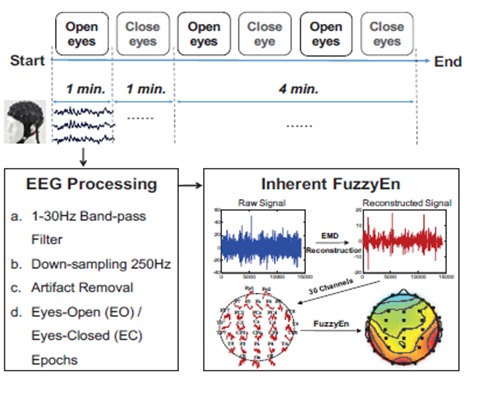- ALL COMPUTER, ELECTRONICS AND MECHANICAL COURSES AVAILABLE…. PROJECT GUIDANCE SINCE 2004. FOR FURTHER DETAILS CALL 9443117328


Projects > ELECTRONICS > 2017 > IEEE > DIGITAL SIGNAL PROCESSING
In recent years, the concept of entropy has been widely used to measure the dynamic complexity of signals. Since the state of complexity of human beings is significantly affected by their health state, developing accurate complexity evaluation algorithms is a crucial and urgent area of study. This paper proposes using inherent fuzzy entropy (Inherent FuzzyEn) and its multi-scale version, which employs empirical mode decomposition (EMD) and fuzzy membership function (exponential function) to address the dynamic complexity in electroencephalogram (EEG) data. In the literature, the reliability of entropy-based complexity evaluations has been limited by superimposed trends in signals and a lack of multiple time scales. Our proposed method represents the first attempt to use the inherent fuzzy entropy algorithm to increase the reliability of complexity evaluation in realistic EEG applications.
Multiscale Entropy Algorithm, Fuzzy Inference System, Recurrent Self Evolving Fuzzy Neural Network.
EEG complexity is fundamentally mercurial and varying during EEG study. In previous studies, researchers have generally ignored the superimposed trends in signals. To improve performance in realistic EEG applications, using an Inherent FuzzyEn algorithm can be made more effective by collecting EEG signals from healthy subjects, which endows fuzzy membership function with EMD function. In this paper, we compared the EEG results (entropy values and RMSD) obtained using fuzzy structures (Inherent FuzzyEn and FuzzyEn) and non-fuzzy structures (SampEn and ApEn). Our findings showed that systems with fuzzy structures exhibit improved performance. Furthermore, the performance of the Inherent FuzzyEn algorithm was superior to FuzzyEn, SampEn and ApEn models.
BLOCK DIAGRAM
